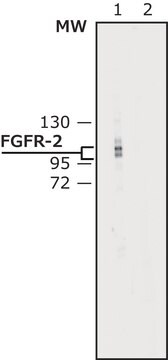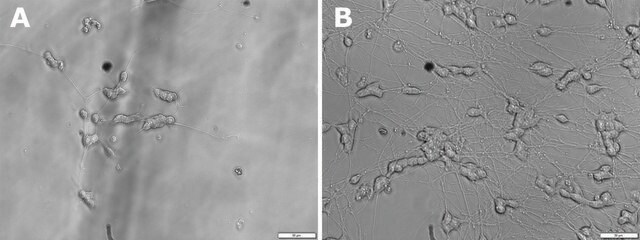F6796
Anti-Fibroblast Growth Factor Receptor-2, Extracellular antibody produced in rabbit

affinity isolated antibody, buffered aqueous solution
Sinônimo(s):
Anti-FGFR-2
About This Item
Produtos recomendados
fonte biológica
rabbit
conjugado
unconjugated
forma do anticorpo
affinity isolated antibody
tipo de produto de anticorpo
primary antibodies
clone
polyclonal
forma
buffered aqueous solution
peso molecular
antigen 115-125 kDa (doublet)
reatividade de espécies
human
embalagem
antibody small pack of 25 μL
validação aprimorada
recombinant expression
Learn more about Antibody Enhanced Validation
técnica(s)
immunohistochemistry (formalin-fixed, paraffin-embedded sections): 1:1,000 using trypsin-digested, human and animal tissue sections
western blot: 1:2,000 using extract of FGFR-2 transiently transfected cells
nº de adesão UniProt
Condições de expedição
dry ice
temperatura de armazenamento
−20°C
modificação pós-traducional do alvo
unmodified
Informações sobre genes
human ... FGFR2(2263)
Descrição geral
Especificidade
Imunogênio
Aplicação
Ações bioquímicas/fisiológicas
forma física
pH 7.4, containing 1% bovine serum albumin and 15 mM sodium azide
Nota de preparo
Exoneração de responsabilidade
Não está encontrando o produto certo?
Experimente o nosso Ferramenta de seleção de produtos.
Código de classe de armazenamento
10 - Combustible liquids
Classe de risco de água (WGK)
WGK 2
Ponto de fulgor (°F)
Not applicable
Ponto de fulgor (°C)
Not applicable
Equipamento de proteção individual
Eyeshields, Gloves, multi-purpose combination respirator cartridge (US)
Certificados de análise (COA)
Busque Certificados de análise (COA) digitando o Número do Lote do produto. Os números de lote e remessa podem ser encontrados no rótulo de um produto após a palavra “Lot” ou “Batch”.
Já possui este produto?
Encontre a documentação dos produtos que você adquiriu recentemente na biblioteca de documentos.
Nossa equipe de cientistas tem experiência em todas as áreas de pesquisa, incluindo Life Sciences, ciência de materiais, síntese química, cromatografia, química analítica e muitas outras.
Entre em contato com a assistência técnica








